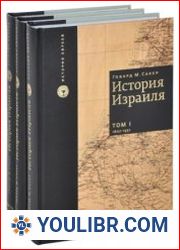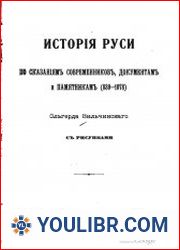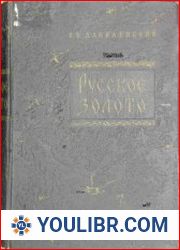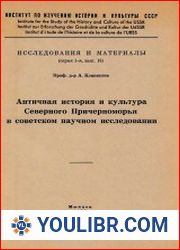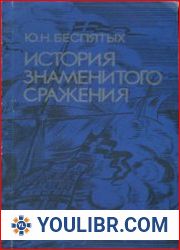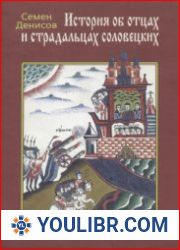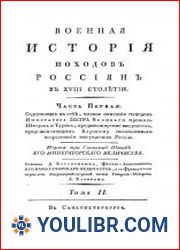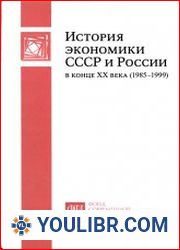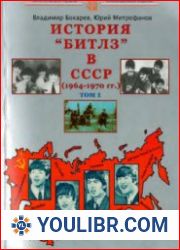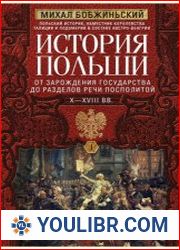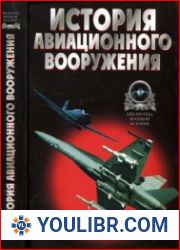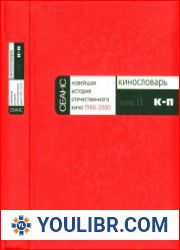
BOOKS - MILITARY HISTORY - Самоходки Сталина. История советской САУ 1919 - 1945...

Самоходки Сталина. История советской САУ 1919 - 1945
Author: Михаил Свирин
Year: 2008
Format: PDF
File size: 88 MB
Language: RU
Year: 2008
Format: PDF
File size: 88 MB
Language: RU
Already during the First World War, almost all over the world began to understand that horse-drawn field artillery did not meet the sharply increased requirements for warfare. Artillery guns of that time were very vulnerable on the march from enemy fire, did not have sufficient mobility and required time to prepare for shooting. And the armies of all countries at that time especially needed new models of artillery weapons capable of quickly changing their location, moving freely off-road with the infantry and reliably protecting their crew from enemy fire. Looking at the first unpretentious samples of self-propelled artillery, more like pieces of armored trains on a wheeled or tractor chassis, hardly anyone could have imagined that they would transform over time into a whole cohort of combat vehicles of different appearance and use. In Mikhail Svirin's new book, you will learn about the main key points in the history of Soviet self-propelled guns, about how Soviet military theorists conceived this type of artillery, get acquainted with the states of units and formations of Soviet self-propelled artillery, from the very first, still timid experiments to "The decline of the era of barrel artillery" in 1955-1960. Special attention is rightfully paid to the development of self-propelled guns during the Great Patriotic War, since many researchers rightfully consider it "the crown of self-propelled artillery."
pdf 파일 다운로드 PDF-Datei herunterladen Stalins Selbstfahrlafetten. Geschichte der sowjetischen SAU 1919 - 1945 pobierz plik pdf pistolety Stalina z własnym napędem. Historia radzieckich pistoletów samobieżnych 1919-1945 تنزيل ملف pdf بنادق ستالين ذاتية الدفع. تاريخ البنادق السوفيتية ذاتية الدفع 1919-1945 скачать файл PDF Самоходки Сталина. История советской САУ 1919 - 1945 descarregar ficheiro pdf Caminhos de Estaline. História do SSA soviético 1919-1945 descargar archivo pdf Autopropulsados de Stalin. Historia de la ACS soviética 1919-1945 download pdf file להוריד קובץ PDF התותחים של סטלין בהנעה עצמית. היסטוריה של רובים סובייטים שהניעו את עצמם 1919-1945 下载 pdf 文件 斯大林的Samokhodka。1919-1945蘇聯 SAU的歷史
télécharger le fichier pdf Auto-conduite de Staline. L'histoire de la SSA soviétique 1919-1945 Scarica il file pdf auto-auto di Stalin. Storia della SAU sovietica 1919-1945 PDFファイルをダウンロード スターリンの自走砲。ソビエトの自走砲の歴史1919-1945 download pdf file Самоходки Сталина. История советской САУ 1919 - 1945 pdf dosyasını indir Stalin'in kundağı motorlu topları. Sovyet kendinden tahrikli silahların tarihi 1919-1945
Dans les années de la Première Guerre mondiale, presque partout dans le monde, on a commencé à comprendre que l'artillerie de terrain à cheval ne répondait pas à l'augmentation spectaculaire des exigences de combat. Les pièces d'artillerie de l'époque étaient très vulnérables à la marche contre le feu de l'ennemi, n'avaient pas une mobilité suffisante et demandaient du temps pour se préparer au tir. À l'époque, les armées de tous les pays avaient particulièrement besoin de nouveaux modèles d'armes d'artillerie capables de changer rapidement de position, de se déplacer librement sur la route avec l'infanterie et de protéger leur calcul contre les tirs hostiles. En regardant les premiers échantillons non gazeux d'artillerie auto-propulsée, plus comme des morceaux de véhicules blindés sur un châssis à roues ou un châssis de tracteur, il est peu probable que quelqu'un puisse penser qu'ils se transforment au fil du temps en une cohorte de véhicules de combat différents en apparence et en utilisation. Dans le nouveau livre de Mikhaïl Swirin, vous apprendrez les principaux points clés de l'histoire de la SSA soviétique, comment ce type d'artillerie a été conçu par les théoriciens militaires soviétiques, et vous apprendrez à connaître les États des pièces et des composés de l'artillerie soviétique, depuis les premières expériences encore timides et jusqu'à « Le coucher du soleil de l'artillerie de tonnerre » en 1955-1960, une attention particulière est à juste titre accordée au développement des SSA pendant la Grande Guerre patriotique, car ce sont ses nombreux chercheurs qui considèrent à juste titre « la couronne de l'artillerie autopropulsée ».
Già negli anni della Prima Guerra Mondiale quasi in tutto il mondo hanno iniziato a capire che l'artiglieria a cavallo non soddisfa le richieste di combattimento in forte aumento. Le armi di artiglieria dell'epoca erano molto vulnerabili alla marcia dal fuoco nemico, non avevano la mobilità necessaria e richiedevano tempo per prepararsi a sparare. E all'epoca, gli eserciti di tutti i paesi avevano bisogno di nuovi campioni di artiglieria in grado di cambiare rapidamente posizione, di viaggiare liberamente sulla strada con la fanteria e di proteggere il proprio calcolo dal fuoco ostile. Guardando i primi campioni di artiglieria autotrasportatrice, più simili a pezzi di blindati su un telaio a ruote o trattori, è improbabile che qualcuno possa pensare che si trasformino nel tempo in un intero coetaneo di diversi per l'aspetto e l'uso di macchine da combattimento. In un nuovo libro di Mikhail Svirin, imparerete i punti chiave della storia della SSA sovietica, di come progettavano questo tipo di artiglieria i teorici militari sovietici, conoscerete gli stati delle parti e dei composti dell'artiglieria sovietica autotrasportatrice, partendo dai primi esperimenti ancora timidi fino ai primi. «Il tramonto dell'era dell'artiglieria a canne» tra il 1955 e il 1960, l'attenzione è riservata allo sviluppo dell'ARS negli anni della Grande Guerra Patriottica, perché è quella che molti ricercatori considerano di diritto la «corona dell'artiglieria autoreferenziale».
Já nos anos da Primeira Guerra Mundial, quase em todo o mundo, começaram a perceber que a artilharia de campo a cavalo não cumpria as exigências de combate. As armas de artilharia da época eram muito vulneráveis a marchar contra o fogo do inimigo, não tinham mobilidade suficiente e levavam tempo a preparar-se para disparar. E os exércitos de todos os países necessitavam, na altura, de novas amostras de artilharia, capazes de mudar rapidamente a sua localização, circular livremente por um caminho sem volta com a infantaria e proteger o seu cálculo contra o fogo hostil. Olhando para as primeiras amostras de artilharia autodeclarada, mais parecidas com pedaços de blindados em um trem de rodas ou tratores, é improvável que alguém supunha que eles se transformassem com o tempo em um conjunto inteiro de carros diferentes na aparência e na utilização de veículos de combate. No novo livro de Mikhail Swirin, você vai aprender sobre os principais pontos-chave da história do SU soviético, sobre como este tipo de artilharia foi concebido pelos teóricos militares soviéticos, conheça os estados das partes e compostos da artilharia soviética, desde os primeiros experimentos, até agora tímidos, até O pôr do sol da era da artilharia de armas, entre 1955 e 1960, tem sido especialmente dedicado ao desenvolvimento da UA durante a Grande Guerra Pátria, uma vez que muitos pesquisadores consideram a «coroa da artilharia autodeclarada».
Уже в годы Первой мировой практически во всем мире начали понимать, что полевая артиллерия на конной тяге не соответствует резко возросшим требованиям ведения боевых действий. Артиллерийские орудия того времени были очень уязвимы на марше от огня противника, не обладали достаточной подвижностью и требовали затрат времени на подготовку к стрельбе. А армии всех стран в то время особо нуждались в новых образцах артиллерийского вооружения, способных быстро менять свое местоположение, свободно передвигаться по бездорожью вместе с пехотой и надежно защищать свой расчет от неприятельского огня. Глядя на первые неказистые образцы самоходной артиллерии, больше похожей на куски бронепоездов на колесном или тракторном шасси, вряд ли кто-то мог предположить, что они трансформируются со временем в целую когорту различных по внешнему виду и применению боевых машин. В новой книге Михаила Свирина вы узнаете об основных ключевых моментах истории советской САУ, о том, каким задумывали этот вид артиллерии советские военные теоретики, познакомитесь со штатами частей и соединений советской самоходной артиллерии, начиная с самых первых, пока еще робких опытов и до заката эры ствольной артиллерии в 1955-1960 гг. Особое внимание по праву уделено развитию САУ в годы Великой Отечественной войны, так как именно ее многие исследователи по праву считают венцом самоходной артиллерии.
Ya en los años de la Primera Guerra Mundial, prácticamente en todo el mundo, comenzaron a darse cuenta de que la artillería montada sobre caballos no cumplía con los requisitos de combate que habían aumentado drásticamente. Las piezas de artillería de la época eran muy vulnerables a la marcha frente al fuego enemigo, carecían de movilidad suficiente y requerían un tiempo de preparación para el disparo. Y los ejércitos de todos los países en ese momento necesitaban especialmente nuevos modelos de armas de artillería capaces de cambiar rápidamente de ubicación, moverse libremente fuera de carretera junto con la infantería y defender su cálculo de manera segura contra el fuego enemigo. Mirando los primeros ejemplares no azarosos de artillería autopropulsada, más parecidos a piezas de trenes blindados en un tren de aterrizaje de ruedas o tractores, difícilmente alguien podría suponer que se transformen con el tiempo en una cohorte entera de vehículos de combate de diversa apariencia y aplicación. En el nuevo libro de Mijaíl Svirin, usted aprenderá sobre los principales puntos clave de la historia de la ACS soviética, cómo concibieron este tipo de artillería los teóricos militares soviéticos, conocerá los estados de las unidades y formaciones de artillería autopropulsada soviética, desde las primeras experiencias, hasta ahora tímidas, hasta «El ocaso de la era de la artillería de cañón» en 1955-1960 Se presta una atención especial al desarrollo de los ACS durante los años de la Gran Guerra Patria, ya que son sus muchos investigadores los que consideran legítimamente la «corona de la artillería autopropulsada».
Schon in den Jahren des Ersten Weltkriegs begann praktisch die ganze Welt zu verstehen, dass die Feldartillerie mit Pferdeantrieb den dramatisch gestiegenen Anforderungen an die Kriegsführung nicht entsprach. Die Artilleriegeschütze dieser Zeit waren auf dem Marsch sehr anfällig für feindliches Feuer, hatten keine ausreichende Mobilität und benötigten Zeit, um sich auf das Schießen vorzubereiten. Und die Armeen aller Länder benötigten zu dieser Zeit besonders neue Modelle von Artilleriewaffen, die ihren Standort schnell ändern, sich im Gelände mit der Infanterie frei bewegen und ihre Berechnung zuverlässig vor feindlichem Feuer schützen konnten. Mit Blick auf die ersten unspektakulären Muster der selbstfahrenden Artillerie, die eher wie Stücke von Panzerzügen auf einem Rad- oder Traktorchassis aussahen, hätte sich kaum jemand vorstellen können, dass sie sich im Laufe der Zeit in eine ganze Kohorte von Kampffahrzeugen mit unterschiedlichem Aussehen und Einsatz verwandeln würden. In dem neuen Buch von Michail Svirin erfahren Sie mehr über die wichtigsten Schlüsselmomente in der Geschichte der sowjetischen Selbstfahrlafette, wie sowjetische Militärtheoretiker diese Art von Artillerie konzipiert haben, lernen Sie die Staaten der Einheiten und Verbände der sowjetischen selbstfahrenden Artillerie kennen, beginnend mit den allerersten, noch zaghaften Experimenten und bis hin zu "Des Unterganges der Ära stwolnoj der Artillerie" in 1955-1960 ist die Besondere Aufmerksamkeit der Entwicklung SAU in den Jähren des Grossen Vaterländischen Krieges rechtlich zugeteilt, da gerade ihre viele Forscher für "den Kranz der selbstfahrenden Artillerie" rechtlich halten.
Already during the First World War, almost all over the world began to understand that horse-drawn field artillery did not meet the sharply increased requirements for warfare. Artillery guns of that time were very vulnerable on the march from enemy fire, did not have sufficient mobility and required time to prepare for shooting. And the armies of all countries at that time especially needed new models of artillery weapons capable of quickly changing their location, moving freely off-road with the infantry and reliably protecting their crew from enemy fire. Looking at the first unpretentious samples of self-propelled artillery, more like pieces of armored trains on a wheeled or tractor chassis, hardly anyone could have imagined that they would transform over time into a whole cohort of combat vehicles of different appearance and use. In Mikhail Svirin's new book, you will learn about the main key points in the history of Soviet self-propelled guns, about how Soviet military theorists conceived this type of artillery, get acquainted with the states of units and formations of Soviet self-propelled artillery, from the very first, still timid experiments to "The decline of the era of barrel artillery" in 1955-1960. Special attention is rightfully paid to the development of self-propelled guns during the Great Patriotic War, since many researchers rightfully consider it "the crown of self-propelled artillery."
Dans les années de la Première Guerre mondiale, presque partout dans le monde, on a commencé à comprendre que l'artillerie de terrain à cheval ne répondait pas à l'augmentation spectaculaire des exigences de combat. Les pièces d'artillerie de l'époque étaient très vulnérables à la marche contre le feu de l'ennemi, n'avaient pas une mobilité suffisante et demandaient du temps pour se préparer au tir. À l'époque, les armées de tous les pays avaient particulièrement besoin de nouveaux modèles d'armes d'artillerie capables de changer rapidement de position, de se déplacer librement sur la route avec l'infanterie et de protéger leur calcul contre les tirs hostiles. En regardant les premiers échantillons non gazeux d'artillerie auto-propulsée, plus comme des morceaux de véhicules blindés sur un châssis à roues ou un châssis de tracteur, il est peu probable que quelqu'un puisse penser qu'ils se transforment au fil du temps en une cohorte de véhicules de combat différents en apparence et en utilisation. Dans le nouveau livre de Mikhaïl Swirin, vous apprendrez les principaux points clés de l'histoire de la SSA soviétique, comment ce type d'artillerie a été conçu par les théoriciens militaires soviétiques, et vous apprendrez à connaître les États des pièces et des composés de l'artillerie soviétique, depuis les premières expériences encore timides et jusqu'à « Le coucher du soleil de l'artillerie de tonnerre » en 1955-1960, une attention particulière est à juste titre accordée au développement des SSA pendant la Grande Guerre patriotique, car ce sont ses nombreux chercheurs qui considèrent à juste titre « la couronne de l'artillerie autopropulsée ».
Già negli anni della Prima Guerra Mondiale quasi in tutto il mondo hanno iniziato a capire che l'artiglieria a cavallo non soddisfa le richieste di combattimento in forte aumento. Le armi di artiglieria dell'epoca erano molto vulnerabili alla marcia dal fuoco nemico, non avevano la mobilità necessaria e richiedevano tempo per prepararsi a sparare. E all'epoca, gli eserciti di tutti i paesi avevano bisogno di nuovi campioni di artiglieria in grado di cambiare rapidamente posizione, di viaggiare liberamente sulla strada con la fanteria e di proteggere il proprio calcolo dal fuoco ostile. Guardando i primi campioni di artiglieria autotrasportatrice, più simili a pezzi di blindati su un telaio a ruote o trattori, è improbabile che qualcuno possa pensare che si trasformino nel tempo in un intero coetaneo di diversi per l'aspetto e l'uso di macchine da combattimento. In un nuovo libro di Mikhail Svirin, imparerete i punti chiave della storia della SSA sovietica, di come progettavano questo tipo di artiglieria i teorici militari sovietici, conoscerete gli stati delle parti e dei composti dell'artiglieria sovietica autotrasportatrice, partendo dai primi esperimenti ancora timidi fino ai primi. «Il tramonto dell'era dell'artiglieria a canne» tra il 1955 e il 1960, l'attenzione è riservata allo sviluppo dell'ARS negli anni della Grande Guerra Patriottica, perché è quella che molti ricercatori considerano di diritto la «corona dell'artiglieria autoreferenziale».
Já nos anos da Primeira Guerra Mundial, quase em todo o mundo, começaram a perceber que a artilharia de campo a cavalo não cumpria as exigências de combate. As armas de artilharia da época eram muito vulneráveis a marchar contra o fogo do inimigo, não tinham mobilidade suficiente e levavam tempo a preparar-se para disparar. E os exércitos de todos os países necessitavam, na altura, de novas amostras de artilharia, capazes de mudar rapidamente a sua localização, circular livremente por um caminho sem volta com a infantaria e proteger o seu cálculo contra o fogo hostil. Olhando para as primeiras amostras de artilharia autodeclarada, mais parecidas com pedaços de blindados em um trem de rodas ou tratores, é improvável que alguém supunha que eles se transformassem com o tempo em um conjunto inteiro de carros diferentes na aparência e na utilização de veículos de combate. No novo livro de Mikhail Swirin, você vai aprender sobre os principais pontos-chave da história do SU soviético, sobre como este tipo de artilharia foi concebido pelos teóricos militares soviéticos, conheça os estados das partes e compostos da artilharia soviética, desde os primeiros experimentos, até agora tímidos, até O pôr do sol da era da artilharia de armas, entre 1955 e 1960, tem sido especialmente dedicado ao desenvolvimento da UA durante a Grande Guerra Pátria, uma vez que muitos pesquisadores consideram a «coroa da artilharia autodeclarada».
Уже в годы Первой мировой практически во всем мире начали понимать, что полевая артиллерия на конной тяге не соответствует резко возросшим требованиям ведения боевых действий. Артиллерийские орудия того времени были очень уязвимы на марше от огня противника, не обладали достаточной подвижностью и требовали затрат времени на подготовку к стрельбе. А армии всех стран в то время особо нуждались в новых образцах артиллерийского вооружения, способных быстро менять свое местоположение, свободно передвигаться по бездорожью вместе с пехотой и надежно защищать свой расчет от неприятельского огня. Глядя на первые неказистые образцы самоходной артиллерии, больше похожей на куски бронепоездов на колесном или тракторном шасси, вряд ли кто-то мог предположить, что они трансформируются со временем в целую когорту различных по внешнему виду и применению боевых машин. В новой книге Михаила Свирина вы узнаете об основных ключевых моментах истории советской САУ, о том, каким задумывали этот вид артиллерии советские военные теоретики, познакомитесь со штатами частей и соединений советской самоходной артиллерии, начиная с самых первых, пока еще робких опытов и до заката эры ствольной артиллерии в 1955-1960 гг. Особое внимание по праву уделено развитию САУ в годы Великой Отечественной войны, так как именно ее многие исследователи по праву считают венцом самоходной артиллерии.
Ya en los años de la Primera Guerra Mundial, prácticamente en todo el mundo, comenzaron a darse cuenta de que la artillería montada sobre caballos no cumplía con los requisitos de combate que habían aumentado drásticamente. Las piezas de artillería de la época eran muy vulnerables a la marcha frente al fuego enemigo, carecían de movilidad suficiente y requerían un tiempo de preparación para el disparo. Y los ejércitos de todos los países en ese momento necesitaban especialmente nuevos modelos de armas de artillería capaces de cambiar rápidamente de ubicación, moverse libremente fuera de carretera junto con la infantería y defender su cálculo de manera segura contra el fuego enemigo. Mirando los primeros ejemplares no azarosos de artillería autopropulsada, más parecidos a piezas de trenes blindados en un tren de aterrizaje de ruedas o tractores, difícilmente alguien podría suponer que se transformen con el tiempo en una cohorte entera de vehículos de combate de diversa apariencia y aplicación. En el nuevo libro de Mijaíl Svirin, usted aprenderá sobre los principales puntos clave de la historia de la ACS soviética, cómo concibieron este tipo de artillería los teóricos militares soviéticos, conocerá los estados de las unidades y formaciones de artillería autopropulsada soviética, desde las primeras experiencias, hasta ahora tímidas, hasta «El ocaso de la era de la artillería de cañón» en 1955-1960 Se presta una atención especial al desarrollo de los ACS durante los años de la Gran Guerra Patria, ya que son sus muchos investigadores los que consideran legítimamente la «corona de la artillería autopropulsada».
Schon in den Jahren des Ersten Weltkriegs begann praktisch die ganze Welt zu verstehen, dass die Feldartillerie mit Pferdeantrieb den dramatisch gestiegenen Anforderungen an die Kriegsführung nicht entsprach. Die Artilleriegeschütze dieser Zeit waren auf dem Marsch sehr anfällig für feindliches Feuer, hatten keine ausreichende Mobilität und benötigten Zeit, um sich auf das Schießen vorzubereiten. Und die Armeen aller Länder benötigten zu dieser Zeit besonders neue Modelle von Artilleriewaffen, die ihren Standort schnell ändern, sich im Gelände mit der Infanterie frei bewegen und ihre Berechnung zuverlässig vor feindlichem Feuer schützen konnten. Mit Blick auf die ersten unspektakulären Muster der selbstfahrenden Artillerie, die eher wie Stücke von Panzerzügen auf einem Rad- oder Traktorchassis aussahen, hätte sich kaum jemand vorstellen können, dass sie sich im Laufe der Zeit in eine ganze Kohorte von Kampffahrzeugen mit unterschiedlichem Aussehen und Einsatz verwandeln würden. In dem neuen Buch von Michail Svirin erfahren Sie mehr über die wichtigsten Schlüsselmomente in der Geschichte der sowjetischen Selbstfahrlafette, wie sowjetische Militärtheoretiker diese Art von Artillerie konzipiert haben, lernen Sie die Staaten der Einheiten und Verbände der sowjetischen selbstfahrenden Artillerie kennen, beginnend mit den allerersten, noch zaghaften Experimenten und bis hin zu "Des Unterganges der Ära stwolnoj der Artillerie" in 1955-1960 ist die Besondere Aufmerksamkeit der Entwicklung SAU in den Jähren des Grossen Vaterländischen Krieges rechtlich zugeteilt, da gerade ihre viele Forscher für "den Kranz der selbstfahrenden Artillerie" rechtlich halten.
Already during the First World War, almost all over the world began to understand that horse-drawn field artillery did not meet the sharply increased requirements for warfare. Artillery guns of that time were very vulnerable on the march from enemy fire, did not have sufficient mobility and required time to prepare for shooting. And the armies of all countries at that time especially needed new models of artillery weapons capable of quickly changing their location, moving freely off-road with the infantry and reliably protecting their crew from enemy fire. Looking at the first unpretentious samples of self-propelled artillery, more like pieces of armored trains on a wheeled or tractor chassis, hardly anyone could have imagined that they would transform over time into a whole cohort of combat vehicles of different appearance and use. In Mikhail Svirin's new book, you will learn about the main key points in the history of Soviet self-propelled guns, about how Soviet military theorists conceived this type of artillery, get acquainted with the states of units and formations of Soviet self-propelled artillery, from the very first, still timid experiments to "The decline of the era of barrel artillery" in 1955-1960. Special attention is rightfully paid to the development of self-propelled guns during the Great Patriotic War, since many researchers rightfully consider it "the crown of self-propelled artillery."











